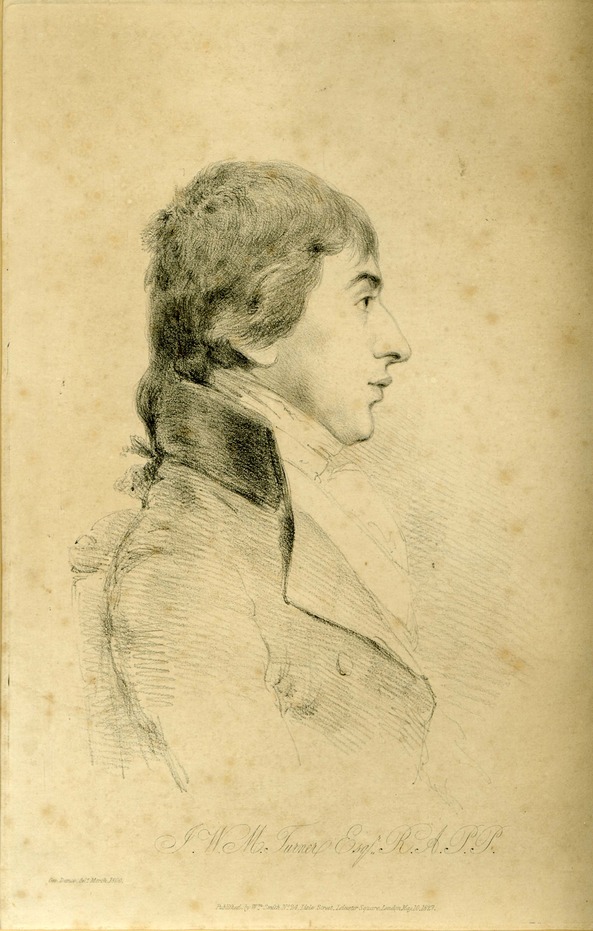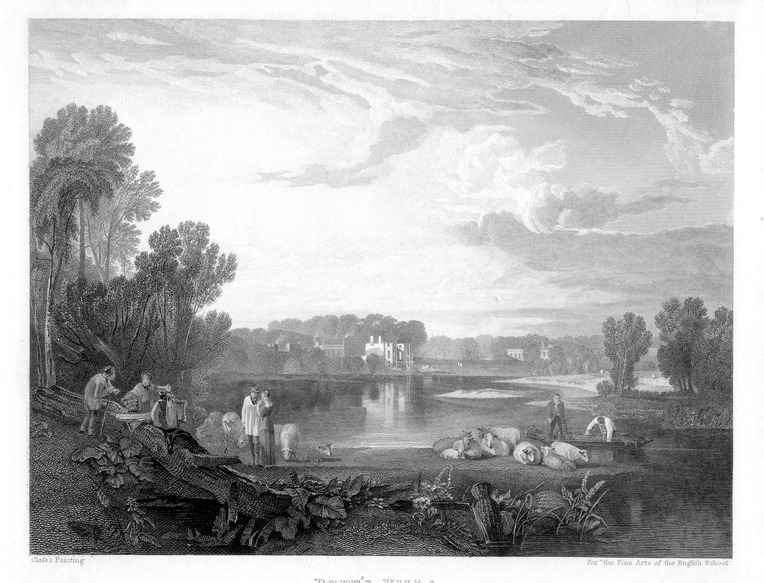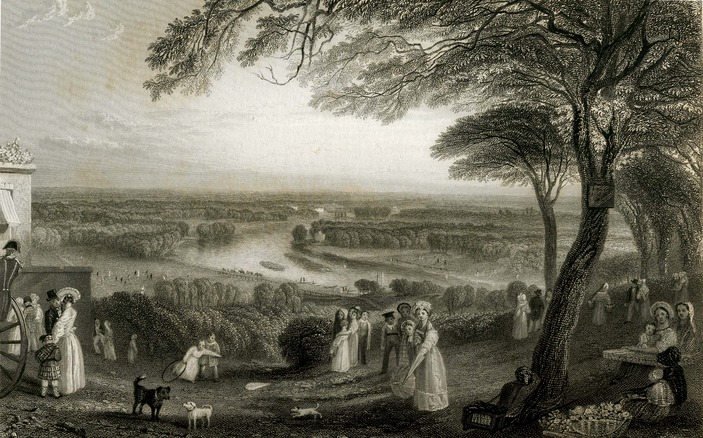J.M.W. Turner, R.A., P.P.
One of Britain’s greatest landscape painters, described by an early biographer as ‘the great magician’.
1775-1851

Early Years by the Thames
In childhood Turner lodged for some time with relatives in Brentford, attending school there and making his earliest watercolours of the river at Isleworth. At the age of 14 he became a student at the Royal Academy. In his twenties, by then a successful painter, he rented properties at Isleworth and Hammersmith, taking out his boat to use as an open-air studio, exploring the nearby riverside communities at Twickenham and Richmond, and capturing the busy life of the Thames.
Sandycombe Lodge

Hark the rude hammer
Turner's explorations of the riverside took him past the villa which had been built in the early 18th c. by the poet Alexander Pope on Cross Deep in Twickenham. Pope was long-dead, but his pastoral poetry fired Turner's imagination, and he was saddened and angered to see that the villa was being pulled down by its owner of the time, Baroness Howe. His elegiac oil painting of 1808, Pope's Villa at Twickenham during its dilapidation takes in the scene across the river, bathed in the soft light of a summer sunset. When he exhibited the painting, he attached his own verses, a lament for heritage lost to the rude hammer, and also penned some dark and angry lines about the perpetrator of this act of destruction. The painting was bought by the art collector Sir John Flemight Leicester, whose house on Cross Deep was close to Pope's Villa
Matchless Vale of The Thames
Artists and poets had been inspired for many years by the magnificent prospect from the brow of Richmond Hill with its wide view over the Thames to Twickenham. The poetry of James Thomson (1700-1748) was much in Turner's mind, particularly Thomson's Summer in "which the beauties of the Matchless Vale of Thames..... To Twitnam's bowers" are praised. The view encompassed the Cambridge Park estate, and part of the grounds of Marble Hill, where the river sweeps round towards Twickenham itself. Turner painted this view many times, most spectacularly in his huge oil England: Richmond Hill on the Prince Regent's birthday of 1819. His Richmond Terrace has a foreground filled with figures from all walks of life, and across the Thames on the fringes of the Cambridge Park grounds, figures can be seen in a cornfield; Little Marble Hill appears on the waterside, at the edge of woodland. Mists hanging over the river, sunrises and sunsets reflected on water, all were captured in Turner's painting of the Thames during his Twickenham years at Sandycombe Lodge. Alexander Pope's lines the silver Thame...where dancing sunbeams on the river play echo the magical effects which Turner's art achieves.
Ancient history
Turner also used the famous view as the setting for epic paintings, re-imagining the Twickenham landscape as ancient Carthage, a setting for Virgil's great love story of Dido and Aeneas, though his friends were not deceived, one declaring that Richmond scenery influenced his style. The happy fusion of Turner's great artistic genius with the beauty of our local riverscape resulted in some of the most beautiful paintings in our history.
JMW Turner's Sandycombe Lodge in St Margarets is open for visitors www.turnershouse.org. It has a permanent collection of works from Turner's Liber Studiorum, exquisite etchings on which Turner worked himself. Several exhibitions of Turner's paintings have been held there, and more are planned for the future.
Further Reading
David Hill, Turner on the Thames, 1993
Nicola Moorby and Ian Warrell, How to paint like Turner, 2010
Franny Moyle, The Extraordinary Life and Momentous Times of J.M.W. Turner, 2016
Catherine Parry-Wingfield, J.M.W. Turner and the ‘Matchless Vale of Thames’, 2020, obtainable at Turner’s House.




